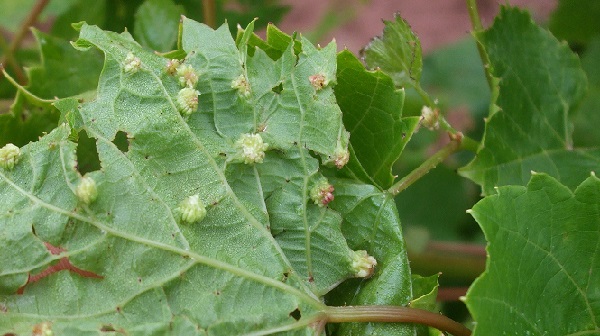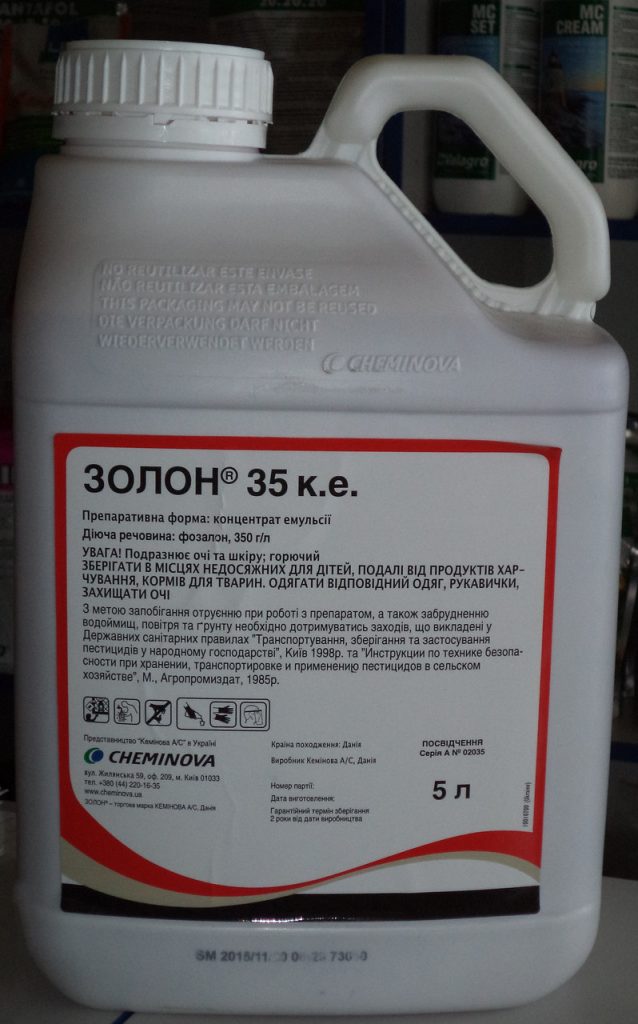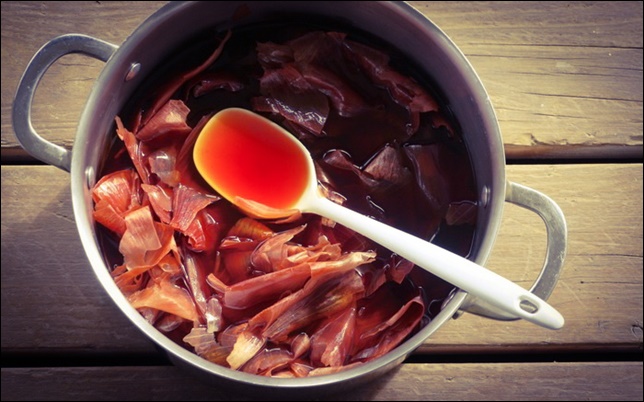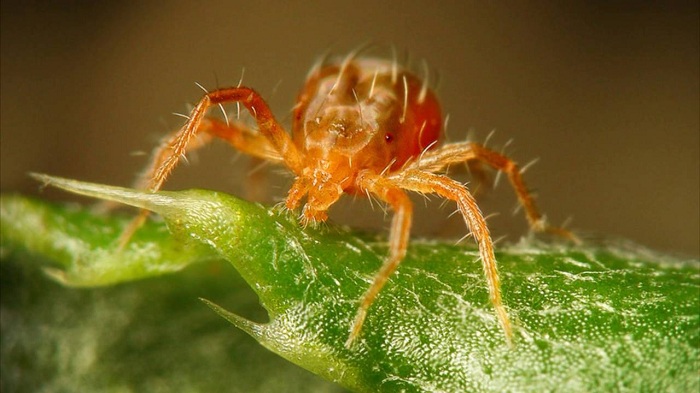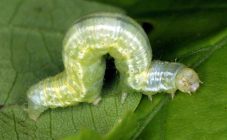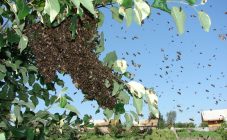Content:
Grapes are the most popular crop in all countries. At the same time, it is the most sensitive to pathogens and pests. Quite often, you can see changes in the form of tubercles on the leaves of the plant. Many people wonder what it is and how to deal with such a scourge. Similar signs can indicate damage to the plant by one of the mite species. So how to deal with it?
Grape mite
To successfully fight the disease of the vine, you need, first of all, to find out what types of ticks exist, how to deal with them and take preventive measures. They hit the bush as soon as the buds open and the first leaves appear. The main types of ticks include:
- Grape itch. It is a very common insect that can be found in every corner of the earth where grapes grow. It survives winter both in the bark of the plant and in fallen leaves. One bud that has not yet blossomed can contain at least 1000 mites. They spread throughout the grape foliage and feed on its juice. Insect saliva is capable of deforming a culture leaf and forming growths on it. The plaque changes color over time from beige to brown. To remove grape itch control measures choose the most effective;
- Spider mite on grapes how to deal with this scourge. This insect is the most dangerous of all species. When this pest invades the shrub, its leaves completely die off, as a result of which the culture stops feeding. The first symptoms of infection are small yellow dots that grow into large spots. Already in July, the leaves die off, respectively, the brushes stop developing. By secreting saliva, the female tick provides a good environment for larval growth. With budding, reproduction only intensifies. For ten days, the female tick lays at least one hundred eggs. She lays at least eight clutches throughout the season. Infection occurs through the wind. On grapes, measures are taken to combat spider mites, during which treatment with drugs should be carried out from the inside of the leaf, where the insect's web is located;
- Kidney grape mite. This pest begins to become active in early spring and feeds on the juice of grape buds. The insect develops at an average daily temperature of plus seven to ten degrees. Reproduction begins in the month of May;
- The leaf mite in most cases infects vineyards in the southern regions of the country. It is activated during the period of intensive sap flow. It feeds on the juice of young leaves; for the entire season, the female lays at least eleven clutches.
What is grape itch
The bumps on the leaves are a symptom of a grape mite infestation of grapes. This pest belongs to the family of gall mites. It is completely impossible to notice the insect itself. It has very small dimensions - the body reaches a size of 0.15 millimeters. It has an oblong shape and is also completely transparent. The body ends with two bristles.
In addition to them, the body is covered with several more villi. The insect moves on two legs.The individual is bisexual and can produce from seven to eight generations per season. At the same time, it develops very quickly. In just two weeks, an adult insect grows from an egg, ready for reproduction.
In winter, the mite hides under the scales of the kidneys and so experiences the cold period. As soon as the air warms up to +15 degrees, it begins to activate, crawls out of its shelter and migrates to young branches.
Since the pest is very small, it is impossible to detect it in time. It is possible to guess about its presence only when traces in the form of tubercles appear on the leaves. On the back of the sheet, you can see gray growths that resemble felt. Because of this feature, the mite is also called felt. The older the itching gets, the more spots form on the leaf, gradually it changes color and turns brown. The sheet rolls up into a tube and dies off.
All this is due to the actions of a tick, which bites through a leaf, injects saliva under the skin, which makes a similar phenomenon.
Very often, the invasion of itching is confused with diseases such as downy mildew or late blight. And, using fungicides, they do not achieve the desired results. In appearance, all these diseases are similar to each other. If you look more closely or carry out a detailed check, then in case of a fungal disease, the plaque will be easily erased with your finger, while the spots left by the tick are not erased.
Due to the defeat of the plant by itching, photosynthesis in grape leaves is disrupted, which entails mineral starvation, respectively, the plant ceases to bear fruit. In the event that you do not pay attention to the affected leaves and do not take timely measures, the insect will continue to multiply and will soon cover the bunches of the plant. Itching grapes will eventually die.
How to deal with a pest
How to get rid of a grape mite, pest control methods, as well as crop treatment are of interest to many winegrowers. The fight against a tick depends on how far it has spread throughout the plant. If only some areas of the total area of the bush are affected, then it can be destroyed by tearing off all the affected leaves. If a much larger area of grapes is covered, then more drastic measures should be applied. For this, drugs are used that contain sulfur. The interval between treatments must be at least ten days.
Sulfur in itself does not harm parasites, but when it penetrates into the body of a pest, a chemical reaction with oxygen occurs, as a result of which hydrogen sulfide is formed. It is this substance that becomes destructive for the tick.
The most commonly used sulfur-containing drug "Tiovit". It has a universal spectrum of action, therefore it is used to eliminate all types of ticks and their larvae.
Many are interested in how else to handle the itch on grapes. There are other drugs on the market that can help combat itching. These include:
- "Fufanon";
- BI-58;
- "Demitan";
- Omite;
- "ZOLON";
- "Neoron".
To fight insects, you need to prepare a solution that is applied to the grapes using a strong jet. It is necessary to spray the plant abundantly, then the drug will fall on both sides of the leaf and will have a positive effect. One bush can be treated with a solution of two to five liters, depending on what size it is.
It is necessary to spray the culture in the early morning, preferably before ten o'clock, or in the evening, starting at eighteen hours and ending at twenty-two hours. An important condition for processing is the weather forecast. In strong winds, it is undesirable to process the vineyard.
The most powerful insecticides with which you can get rid of the grape mite remain:
- Actellik;
- "Vertimek".
These funds are used only in cases where nothing else can help the plant. These preparations contain substances that are dangerous for both insects and humans. Especially it is impossible to use them during the period of bees emergence. In this case, spraying the grapes is best done in early spring, when it is just blooming. In addition, you need to be sure that the plant is completely affected.
Folk remedies for combating grape mites
How to spray itch on grapes without using chemicals? With the timely detection of the parasite, you can resort to protecting the vine with the help of folk remedies. These are the simplest, homemade, free remedies that, with a slight damage to the plant, can rid it of pests. Prepare them in the following way.
Tincture of onion peel
To prepare it, you need to take plain water and dry onion husks. Insist for two or even three days. After that, you need to carefully process not only the leaves of the grapes, but also its trunk.
Marigold infusion
To prepare this tool, you need to soak half a bucket of dry marigolds in ten liters of water. Water must be used only heated. The substance is infused for two days. Before using the drug, add about fifty grams of laundry soap to it. The plant is processed only in the evening.
These remedies are only effective when you need to treat a small area of the plant affected by a grape mite, and also if you follow the instructions conscientiously. If you start the processing process, then in these cases the proper result will be obtained only when using chemicals. Therefore, it is recommended to spray the grapes with drugs in a timely manner for prevention.
The best way to deal with ticks
To protect grapes from diseases and pests, prevention is the most effective method. After all, it is much easier to prevent infection than to treat the plant for a long time later. In addition, for preventive measures, there is no need to use drugs of chemical origin. It is enough to use a biological product and agrotechnical actions.
Also, do not neglect the collection of fallen leaves, since this is a hotbed of tick infestation. In the area of the root zone, loosening is periodically carried out. The plant should be constantly monitored and at the first sign of infection to take all the necessary protective measures.
To get high yields, you should carefully look after the plant and do not forget about the rules of care. Thanks to them, the grapes will grow healthy and bear fruit well.
